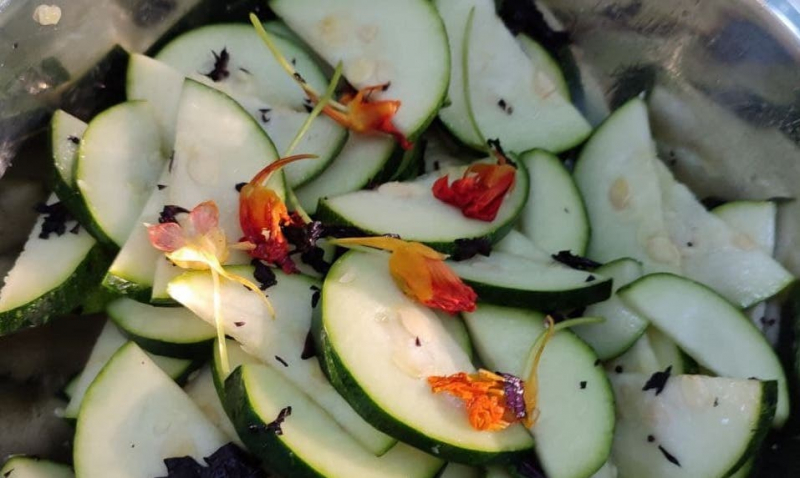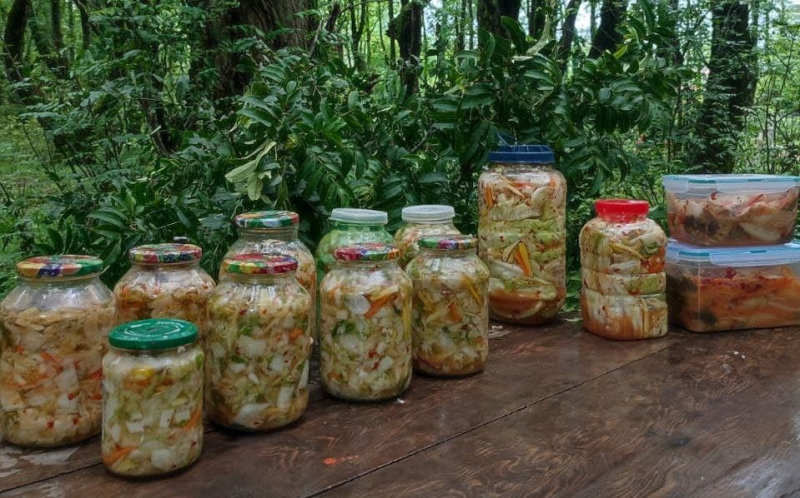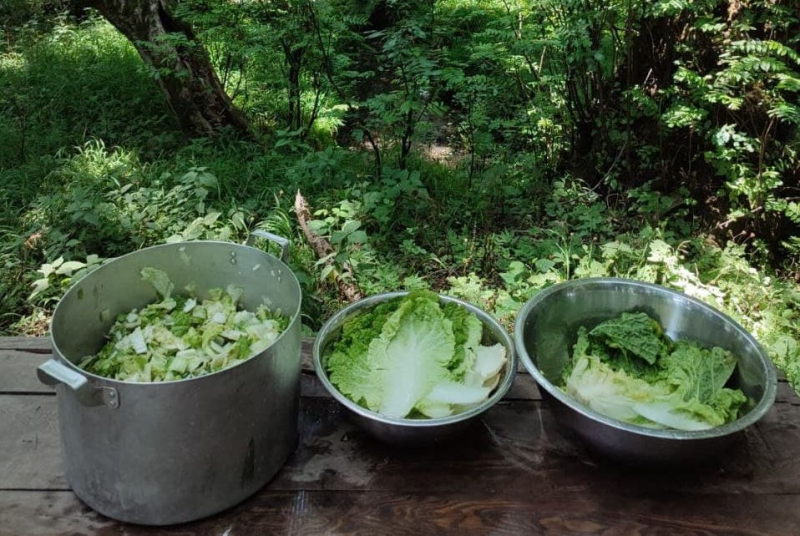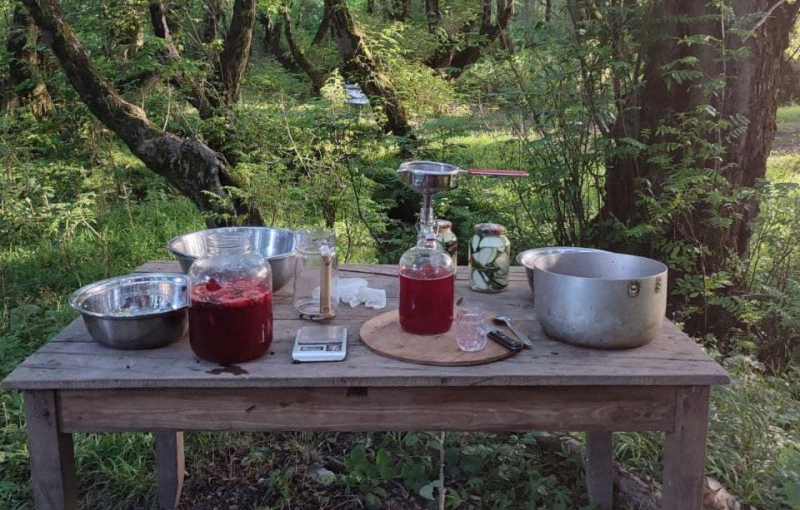Could you tell us about yourself? What’s your background and is it somehow connected with your interest in fermentation?
My name is Lera, I work in biotechnology. I’ve studied at St. Petersburg State Chemical Pharmaceutical University and immersed myself in the pharmaceutical industry. As it happens in large corporations, I felt burnout due to bureaucracy and a hectic money-earning lifestyle. It felt like life has shrunk down to working five days a week and going to bars on weekends. That’s why I decided to run away from it all to South America, far away in the Andes, to re-discover myself and my profession.
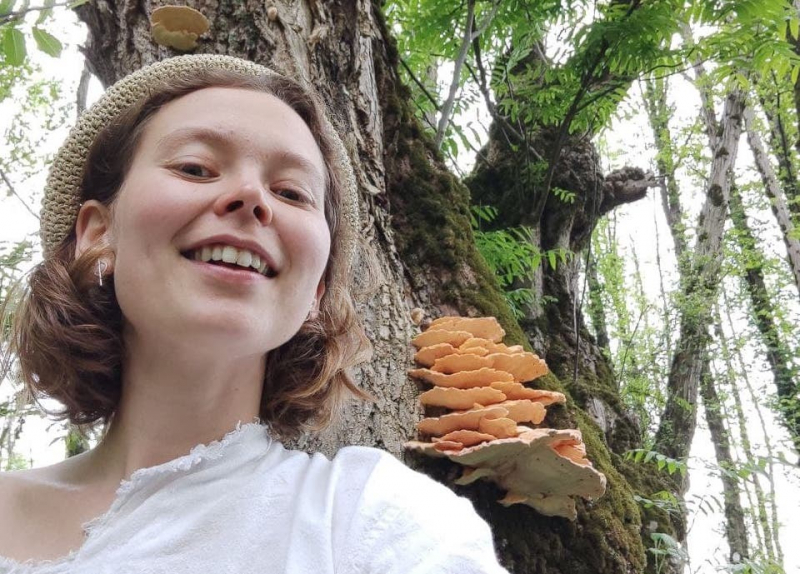
Valeriia Sofina. Photo courtesy of the subject
There, I had kombucha from freshly-made apple juice to accompany a conversation, fresh bread with salty butter to start the day, and water kefir to freshen up after working in the garden. That’s when I realized the creative and social aspects of biotechnology. It’s not only about doing science in a white coat at your secret lab, it’s a science for people and about people. That’s how the Microrevolucion blog appeared. I moved to Georgia, to Chateau Chapiteau, where I take care of a big farm and continue my experiments with microorganisms for the benefit of this community: I turn my harvest of Chinese cabbage into spicy kimchi and create kombucha from Kakhetian peaches in my forest bar.
Fermentation seems to be old-fashioned to some people, what do you think about that? Do your friends support your hobby?
Fermentation can’t come out of fashion, it’s been in human life throughout its entire history: from the first time someone got drunk on wine, had a risen bread, or made the first batch of sauerkraut. Fermentation is a classic, a tradition. It’s about our roots.
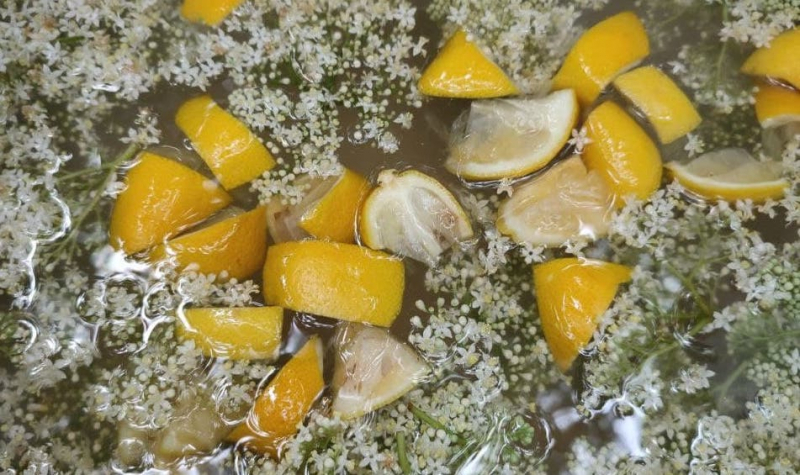
Photo courtesy of the subject
It’s also very fun and keeps you experimenting. You can immerse yourself into this world or take a glimpse into it by looking at people who are into it. It’s up to you whether to buy or to produce.
When you start to surround yourself with cans of floating substances and build a mushroom farm using Ikea containers, your friends and family sort of see you as a weirdo. But as you get deeper into this field, you start to meet like-minded people and then form a community, to which more and more “weird” people are drawn. And at some point, your grandmother asks you to share a kimchi recipe, while your friends return from visiting you with a tea mushroom in a jar.
You took part in the ITMO Accelerator. What was it like? What did you learn?
The Accelerator was an interesting experience for me. It taught me that the creation of a project requires your full force, constant work, and a tightly-knit team. It was great to follow the development of projects by fellow startuppers and receive support from your mentor when you really needed one (thank you, Maxim!). And of course, the first-ever attempt to conduct a pitch is unforgettable. It’s priceless to be able to share your ideas in three minutes so that people would hear you and get you.
Your blog has a unique concept – could you describe what it’s about? For example, all posts are translated into Spanish – why so? And do you manage the community by yourself?
Microrevolucion is a movement for the creation of a symbiotic relationship between humans and microorganisms.
We form a community of people built on the principles of democratization of biotech knowledge, experience, and cultural exchange, as well as joint creation and collaboration. We immerse ourselves into the microworld in order to understand how it functions, learn how to value biodiversity at different levels, and discover the natural power of communities. It’s a micro-socialism of sorts.
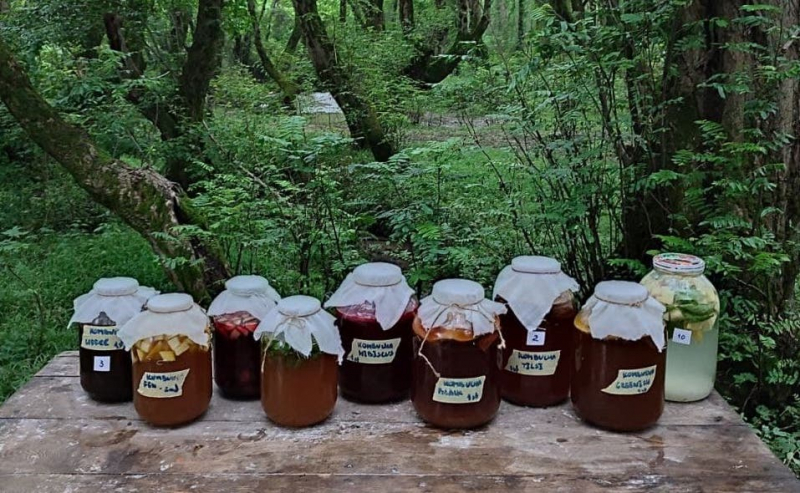
Photo courtesy of the subject
The Spanish language stayed with me after my adventures in South America, where I met the microrevolucion community for the first time. I like working with this audience and learning about biotech projects of people from the other side of the globe. They are always open for communication, share their projects, and organize amazing festivals!
I work on the blog alone but would love to collaborate with like-minded people, so if you see a way for us to work together – feel free to reach out!
I feel like some people who would like to give fermentation a try are scared of doing it wrong. Do you have any advice for aspiring microrevolutioners? Where to start?
Fermentation is about working with living organisms, so you should try to understand them: see how they function, what they eat, what conditions they prefer, and how they interact with the environment. After learning the basics, you’re free to start experimenting!
Sure, sometimes the result might be disappointing, but remember that it’s still an achievement for your personal experience in biotech. It provides you with new ideas for further immersion and studying of this culture.
To try wild fermentation for the first time ever, beer from a ginger bug is the best option. To learn more about lacto-fermentation – try sauerkraut. And for getting to know cultures – a good-old tea mushroom will do. Welcome to our ranks, comrade microrevolutioner!
And finally, if you feel inspired to produce something microrevolutionary yourself, here’s a fun recipe to try:
Kimchi is the Korean way to ferment vegetables. Some people believe that there’s only one proper way to do it, e.g. only Chinese cabbage, daikon, or gochugaru will do. However, there are so many variations of kimchi that even Koreans confuse them. So feel free to enjoy it any way you want, here’s mine:
-
Take Chinese cabbage and thoroughly wash it from dirt and insects.
-
Add a reasonable amount of salt and leave it like that for two hours. Salt the solid part of the cabbage especially well.
-
Turn it around every 30 minutes, so that it gets salted evenly.
Thus, we've created a selective environment for lactic acid bacteria that live on cabbage. It’s only they who can survive despite the large amount of salt. They allow you to reach the needed level of acidity and make the cabbage soft.
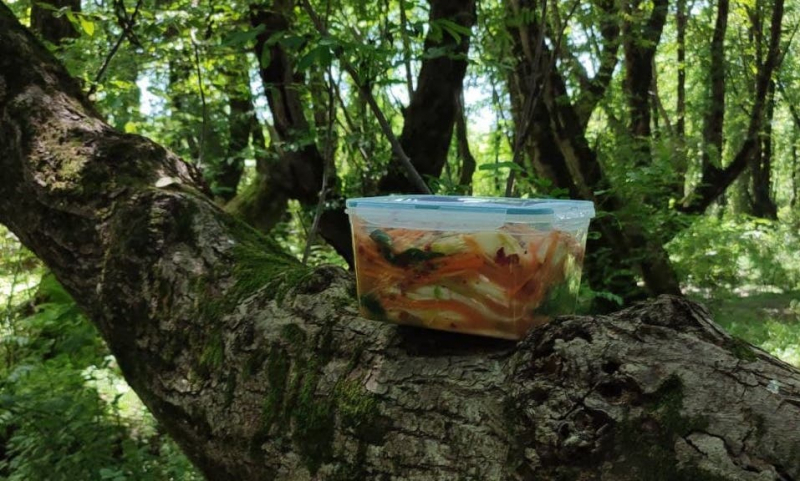
Photo courtesy of the subject
During these two hours, let’s prepare a “porridge”:
-
Add several tablespoons of rice flour into cold water, stir it, and put it on the stove.
-
Bring it to a boil and add a couple of spoons of brown sugar.
-
Turn the heat down, leave it until the “porridge” gets thick. Then let it cool down.
-
Wash the cabbage to get rid of excess salt.
-
Chop some carrots and radishes. Mix them with the cabbage.
-
Blend some garlic, onion, ginger, and chili. I used dried chili – it had to be brought to a boil to make it softer. Mix it with the “porridge.”
-
Thoroughly spread this spicy mixture on each leaf of the cabbage.
-
Put the cabbage into a hermetic container or a jar so that it would be immersed in the sauce. That’s how we stop oxygen from getting in – this is beneficial for lactic acid bacteria and prevents mold.
Leave it for 24-28 hours at room temperature and then store it in the fridge. Now you can taste it and use it as a snack or an experimental ingredient for soup, pancakes, and pelmeni. Enjoy your kimchi!

